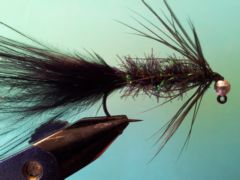Posts Tagged ‘Wet flies’
{{start}}
For wet flies its best to either find the fish on a sounder or have an educated guess where the fish are and then to dredge the fly through that zone at various speeds – locking into the speed and depth that works. In my experience if your not hooking up to structure occasionally your not in the hunt.
{{end}}
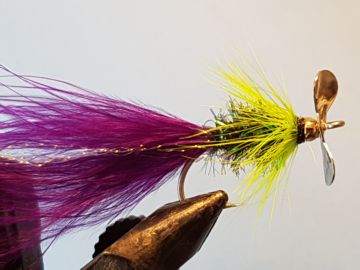
{{+1}}Chatto’s fizzer{{-1}}
{{start}}
This fly swims well and the propeller at the front adds an element of action that fish find enticing. You can tie this fly in any colour combination to mimic the colour of some of the more popular lure colours that your mates that fish the "dark side" use so successfully.{{end}}
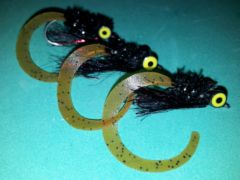
{{+1}}Black rubber tail fly{{-1}}
{{start}}
This fly has turned out to be a fantastic point fly for bass in Lake Maroon. I have fished it for two years in a row in the Variety Club competition with a MKII olive or black woolly bugger on a dropper and achieved two podium finishes.{{end}}
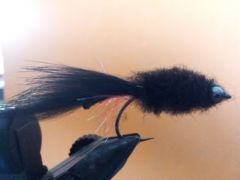
{{+1}}Destroyer – Chatto’s variant{{-1}}
{{start}}
My variant does not include the shroud of mara wool tips around the zonker tail. I have left that off because for me the currents around the body of the fly produce more movement in the tail when it is not shrouded. I like hot spots on flies and accordingly have added a hot spot of red Wapsi palmer chenille under the tail. For my deeper water flies, as many other users have done, I use bead chain eyes rather than the unweighted plastic chain eyes as on the original.{{end}}
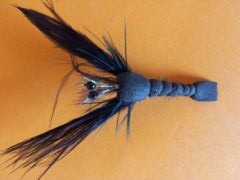
{{+1}}Floating red claw{{-1}}
{{start}}
This fly is a variation to my original yabby pattern and has been designed to be fish on a sinking line. I like to fish them, in water from 1 to 4 meters deep, either as a single fly or in a team of two flies as a point fly. If fishing them in a team I like the dropper with the second fly to be 25cm long and 1.2 meters above the point fly.{{end}}

{{+1}}Cormorant{{-1}}
{{start}}
Cormorant flies have plenty of movement generated through the wispy marabou wing that extends the full length of the fly and has, as a hot spot, a very visible chartreuse tag.{{end}}

{{+1}}Bass teaser{{-1}}
{{start}}
If you make the hook light enough and the wing long enough this fly swims hook point up making it quite snag resistant. It swims well and when fished with a twitching movement on either dry or sinking lines it has plenty of movement and of course being relatively compact it's not a fly that will result in a lot of short takes.{{end}}
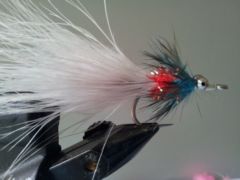
{{+1}}Gusto{{-1}}
{{start}}
This is a Peter Morse fly and a great variation on a Wooly Bugger that is making its mark in fresh water fly fishing. It's dressed on a wide gape hook that creates an effective "keel" effect and sports a relatively long marabou tail and a dense collar which together create plenty of currents around the fly that really get the marabou moving. It is adaptable for a range of species and situations.{{end}}
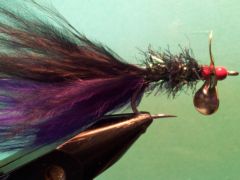
{{+1}}Propeller bugger{{-1}}
{{start}}
This fly is one of just 4 flies that I carry in my native fish fly box that will take fish sub-surface when surface flies are just not working. Not surprisingly it's got elements of a woolly bugger but importantly it has the bit of bling and movement that is so important to our predatory native species.{{end}}
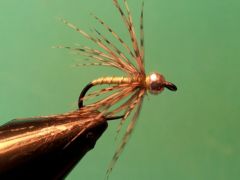
{{+1}}Tungsten bead head chartreuse and partridge spider{{-1}}
{{start}}
Bead head spiders fish very well in conjunction with traditional spider flies and give you the opportunity of adding a bit of flash to your team and more importantly get your team down a little. The benefit of that of course is that the added depth gives a little more vertical travel to your team of flies as they swing round at the end of the drift and start to lift, which as we all know is when the majority of hits occur when swinging spiders.{{end}}














